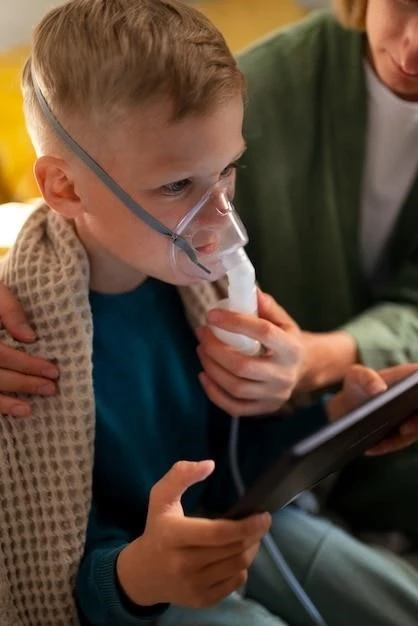Symptoms of Bacterial Pneumonia
Signs often include fever and chest pain.
Common Symptoms
In addition to fever and chest pain, symptoms can include cough, shortness of breath, fatigue, and possibly coughing up yellow or green mucus.
Causes of Bacterial Pneumonia
Most commonly caused by Streptococcus pneumoniae.
Bacterial Infection
Bacterial pneumonia is caused by bacteria entering the lungs, leading to inflammation and infection. Common bacteria include Streptococcus pneumoniae, Haemophilus influenzae, and Staphylococcus aureus.
Treatment for Bacterial Pneumonia
Antibiotics are the primary treatment approach.
Antibiotics
Antibiotics, such as amoxicillin or azithromycin, are prescribed to combat bacterial pneumonia. It’s crucial to complete the full course of antibiotics as directed by a healthcare provider to ensure the infection is fully treated.
Rest and Hydration
Receiving adequate rest and staying hydrated are essential components of the recovery process for bacterial pneumonia. Rest helps the body to fight off the infection, while staying hydrated helps to thin mucus and ease breathing difficulties.
Risk Factors for Bacterial Pneumonia
Factors include age, weakened immune system, smoking.
Age
Both the very young and the elderly are at higher risk for bacterial pneumonia. Infants and young children under 2 years old, as well as adults over 65, are more susceptible due to developing or weakened immune systems;
Weakened Immune System
Conditions like HIV/AIDS, cancer, organ transplantation, diabetes, and chronic diseases can weaken the immune system, making individuals more susceptible to bacterial pneumonia. Proper management of these conditions is crucial to reduce the risk.
Smoking
Cigarette smoke damages the lungs and weakens the immune system, increasing the risk of bacterial pneumonia. Smoking cessation is crucial in reducing susceptibility to respiratory infections and improving overall lung health.
Prevention of Bacterial Pneumonia
Key measures for prevention include vaccination.
Vaccination
Getting vaccinated against common bacterial pneumonia-causing pathogens, such as Streptococcus pneumoniae and Haemophilus influenzae, can significantly reduce the risk of developing bacterial pneumonia, particularly in high-risk individuals.
Hand Hygiene
Regular handwashing with soap and water can help prevent the spread of bacteria that can cause pneumonia. Proper hand hygiene is essential in reducing the risk of bacterial infections, including pneumonia.
Avoiding Exposure
Avoiding close contact with individuals who have respiratory infections, practicing good respiratory hygiene, and staying away from crowded or polluted environments can help reduce the risk of exposure to bacteria that cause pneumonia.

Bacterial Pneumonia in Children
Symptoms in children vary from adults.
Symptoms in Children
In children, bacterial pneumonia symptoms can include high fever, rapid breathing, cough, wheezing, and difficulty feeding. It’s important to seek medical attention promptly if these symptoms are observed in a child.
Complications of Bacterial Pneumonia
May lead to pleural effusion or sepsis.
Pleural Effusion
Pleural effusion, a potential complication of bacterial pneumonia, occurs when excess fluid collects in the space between the lungs and chest wall, leading to breathing difficulties. Prompt medical treatment is essential to resolve this complication.
Sepsis
Sepsis, a severe complication of bacterial pneumonia, occurs when the body’s response to infection causes widespread inflammation and organ dysfunction. Immediate medical attention is critical to treat sepsis and prevent further complications.
Diagnosis of Bacterial Pneumonia
Medical history, physical exam, chest X-ray.
Physical Examination
During a physical exam for bacterial pneumonia, a healthcare provider will listen to the lungs with a stethoscope. Signs like crackling noises or dullness upon percussion may indicate a possible diagnosis of pneumonia and help guide further testing and treatment.
Chest X-ray
A chest X-ray is commonly used to diagnose bacterial pneumonia by revealing abnormal areas in the lungs. It allows healthcare providers to assess the extent and location of lung inflammation, helping to confirm the presence of pneumonia and determine the best course of treatment.
